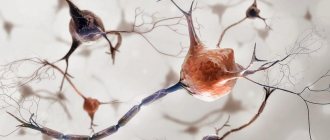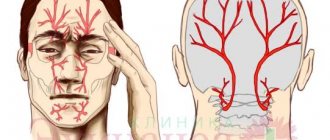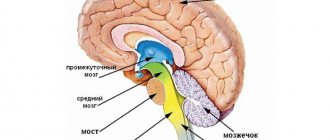Déjà vu is a common phenomenon, references to which can be heard from people of any age and gender in all corners of the planet. People from scientific circles became interested in such a mysterious fact, which defies logical explanation, several centuries ago. Today, it has become possible to understand such a difficult issue precisely thanks to the results of numerous scientific works.
Historical roots of the study of specific effect
For many millennia, humanity did not have the scientific tools to obtain knowledge about inexplicable phenomena, which is why all the strange events that occurred were written off as something supernatural. Modern people have little faith in mysticism, and therefore are eager to receive competent explanations from a scientific point of view about the nature of the deja vu effect.
It is this term that has become widespread worldwide and is used when it comes to describing feelings that are felt by a person as if they had already been experienced before.
The terminology is also excellent for characterizing situations that can be said to have already happened in a person’s life.
The Frenchman Emile Boirac, who is known as a brilliant philosopher, was the first to study this strange phenomenon. It was he who called the mysterious riddle “déjà vu,” and then his followers began to put forward a number of hypotheses regarding the nature of the strange effect.
Initially, a group of brave scientists came to the conclusion that it was all due to severe fatigue of the body, during which it is difficult for the brain to navigate in space, as a result of which it begins to inadequately perceive the surrounding environment. Then other scientists put forward the theory that the hemispheres of the brain process incoming information at different speeds.
After such a bold statement, there was a version from the American specialist Arthur Allen, who suggested that the phenomenon is the result of forgotten dreams. A little later, Sigmund Freud expressed the idea that déjà vu can be explained by the specific work of the subconscious. However, Gustav Jung's idea sounded different, implying that the phenomenon represents the memory of ancestors or arises as a result of the resurfacing of moments from past lives.
Dialogue: Deja vu: pathology or norm?
But scientists fundamentally disagree with this theory. They concluded that frequent déjà vu may indicate brain dysfunction. “Dialogue” decided to look into the issue and find out what it is: mysticism or ripening health problems.
For an answer, the Dialogue correspondent turned to Ekaterina Vinogradova, Candidate of Biological Sciences, Associate Professor at St. Petersburg State University.
The term “déjà vu” was first introduced by Emile Boirac at the end of the 19th century in the book “The Future of Psychological Sciences.” This word is translated as “already experienced”; there are similar terms: “deja fe” - already done, “deja vecu” - already experienced (when a person recognizes the sensations experienced for the first time), “deja raconte” - already told.
“Similar terms are less common than déjà vu, the essence of which is that what we saw for the first time seems familiar to us. After Buarak, the effect began to be studied more carefully. And today there is debate among scientists: is this normal or pathological? The fact is that the phenomenon is classified as a group of derealization disorders (a perceptual disorder in which the surrounding world is perceived as unreal or distant, and in which memory impairment can occur - Dialogue News Agency). One theory, although not very supported, links this to the concept of “false memory” - when a person is implanted with non-existent memories. For example, for two or three weeks they tell something that did not happen, then the person himself begins to believe in it. However, in this case we are still talking about different things,” explains Vinogradova.
The expert, citing the work of Russian, American and Czech scientists, said that most people experience the deja vu effect. So, some research works talk about 70% of the world's population, others - about 97%. In other words, this feeling is characteristic of both sick people and completely healthy people. In the first, it occurs more often than usual - once or even several times a week. But the latter experience it much less often - several cases a year or several years.
In a healthy person, this mainly occurs against the background of sleep disturbances, increased anxiety, and restlessness, but sometimes this happens completely spontaneously. Frequent occurrence of déjà vu may be a symptom of depression, temporal lobe epilepsy or schizophrenia.
Associate Professor at St. Petersburg State University Ekaterina Vinogradova
“The authors of some works believe that this may be an early criterion for differential diagnosis of the manifestations of the disease. But, again, this theory has not been confirmed. Because this happens in healthy people too,” says the candidate of biological sciences.
She noted that for those who suffer from epilepsy, the feeling of the moment experienced is accompanied by negative emotions - anxiety, fear, and this can also be a harbinger of an epileptic seizure. If we talk about a person who does not suffer from brain diseases, then this is not psychopathology, but some kind of neurological deviation. Now the effect of déjà vu is being studied on the basis of encephalograms or MRI data; the indicators differ in healthy and unhealthy people.
“Basically, déjà vu is associated with the hippocampus (this is part of the limbic system of the brain, responsible for the formation of emotions and memory consolidation - Dialogue news agency). When we see something familiar, we activate a substance in the prefrontal or medial temporal areas of the head. And, roughly speaking, the brain compares what is there with what lies in the hippocampus. If there is a coincidence, then what is happening really happened; if not, then this is a false memory. That is, the feeling of an experienced moment arises as a result of a disruption in contact between the neocortex and the hippocampus or temporal region. This happens against the background of fatigue, because the cortical influence weakens. But epileptic déjà vu is somewhat different from non-epileptic déjà vu. We are talking about another characteristic on the encephalogram. In patients, this condition looks like a mild version of an epileptic seizure,” says Ekaterina Vinogradova.
In people diagnosed with epilepsy, déjà vu can be induced artificially.
This is due to the treatment method: doctors implant electrodes into their brains to reduce the number of attacks. They are stimulated in a certain way, and the person has the feeling that he has already experienced this or that moment.
If we take into account only healthy people, then scientists divided them into two groups: those who have the feeling of “already experienced” often and rarely. In the first case, MRI results showed some change in the ratio of gray and white matter.
“This is stated in a Czech research paper from 2021. It turns out that there is less gray matter in some areas of the brain than normal. Basically, some parts of the hippocampus are affected,” says the specialist.
Despite progress in the study of déjà vu, scientists do not stop there. They continue to debunk the myths associated with this phenomenon, eliminating the religious version of reincarnation. Today the main question is: is this normal or pathological? So far, experts from all over the world agree on one thing - we are talking about a brain error, which can be compared to a glitch in a computer program.
Versions of the explanation of déjà vu, which are stated in scientific concepts
Today, scientists are closer to solving a centuries-old mystery that has haunted the minds of people. According to the latest concepts put forward, the explanation for the strange effect that affects about half of the world's population could be something like this:
- excessive passion for reading fiction and watching films (imagination in combination with visual memory often produces false pictures); - frequent travel (visual memory is filled with visual images); - the fact of having problems with memory and the inability to remember the situation as a whole; — the presence of disturbances in the functioning of the temporal lobe of the brain (this area is responsible for the formation of long-term memory); - problems in the functioning of the hippocampus (it is responsible for transferring information from short-term memory to long-term memory, and therefore, if there are malfunctions, the present is mistaken for a previous event).
It should be noted that with disorders associated with the activity of the hippocampus and temporal lobe of the brain, the déjà vu effect can haunt a person for a long period of time. You can independently resort to saying your beliefs out loud that all the strange pictures that come in do not fit in with reality. This phenomenon should not be confused with hallucinations, but it would not be a bad idea to visit a psychologist if the strange state continues for quite a long time. Consulting a qualified specialist and following the measures recommended by the doctor will greatly reduce the inconvenience caused by the obsessive state and the appearance of inexplicable sound effects.
To avoid the occurrence of a strange phenomenon in the future, you should start training your intellect as soon as possible and be sure to pay due attention to maintaining intellectual abilities in old age.
How science explains the déjà vu effect
Déjà vu (French déjà vu - 'already seen') is a phenomenon in which a person has the feeling that he has already experienced a certain event in the past that never happened to him. Scientists estimate that 60 to 80% of people have experienced this sensation at least once in their lives. The scientific community has not yet fully studied the phenomenon of déjà vu; this is explained by the fact that the déjà vu effect occurs under the influence of a certain stimulus, which is very difficult to simulate in laboratory conditions. However, science has always tried to find an explanation for this phenomenon:
- In a German psychology journal in 1878, a version was put forward that a possible cause of the déjà vu effect was ordinary fatigue.
- In 1889, this hypothesis was refuted by William H. Burnham. According to his research, the cause of déjà vu is that the body has spent too much time in a state of rest and relaxation. Therefore, our brain easily finds matches for unusual characteristics of new situations and turns them into already familiar ones.
- In 1884, some psychologists came to the conclusion that the cause of the déjà vu effect was the so-called “double brain.” According to studies, one hemisphere of the brain receives information a moment earlier than the other, giving rise to the feeling of repeating a previously lived experience.
- In 1895, Frederick Myers proposed that déjà vu occurs when our subconscious mind concentrates information faster than our conscious mind.
- Arthur Allyn in 1896 stated that déjà vu manifests itself as elements of forgotten dreams, or perhaps as a result of a momentary lapse of attention when we encounter a new mental image.
- According to the theory of psychoanalysis, déjà vu is a defense mechanism of our Ego (“I”) against the Id (“It”) and Super-Ego (“Super-Ego”), those components of the personality that seek to control the Ego.
- According to the famous Swiss psychiatrist Carl Jung, déjà vu is a product of “collective consciousness” that reproduces fragments of human experience and passes from generation to generation.
Today, science continues to explore the déjà vu effect and conduct experiments in the field of neurophysiology. Experts have concluded that patients with temporal lobe epilepsy may hold the key to déjà vu. The findings suggest that déjà vu may be caused by abnormal electrical activity in the brain. Some patients with epilepsy say they experience déjà vu and sense that a seizure is coming. In healthy people, the feeling of déjà vu is explained by a violation of the immediate response of the brain. The overproduction of active neurons, which are responsible for the processes of memory and recognition, turns out to be too high, as a result of which our brain begins to confuse the past with the present. Along with this, scientists have found that healthy people also experience cases of abnormal electrical activity in the brain, similar to those common to epileptics. An example of this phenomenon is the myoclonic jerk, that sudden body spasm that some people experience before entering a deeper stage of sleep.
The main problem in studying the phenomenon of déjà vu is that people always talk about it retrospectively, that is, with an eye to the past, in which it is impossible to accurately visualize fragments from our subconscious. In the 1960s, scientists James Dees, Henry Roediger and Kathleen McDermott found a way to create a laboratory version of déjà vu. They investigated a procedure they called DRM (Deese-Roediger-McDermott paradigm) after the first letters of the authors' last names. In the DRM scientific experiment, subjects were offered a large list of words, for example: “pillow”, “mattress”, “bed”, “chair”, “alarm clock”, “nap”, “nightmare”, “pajamas”, “night light” and etc. All these words belong to one category - the process of sleep. But the word “sleep” is not on this list, in other words, scientists selected words that were associated with the word sleep. When subjects were asked after some time whether the word “sleep” was on the list, most “remembered” that it was there. The resulting effect is not very similar to real déjà vu, but the researchers insisted on the identity of the mechanisms of their occurrence. Today the main question is: is this normal or pathological? So far, scientists around the world agree on one thing - we are talking about a brain error, which can be compared to a glitch in a computer program.
Sources:
https://blog.cognifit.com/ru/deja vu-why-happens/
https://postnauka.ru/faq/63095
Medical Internet conferences
Deja vu effect
Afanasyeva A., Makarova M., Pochtar O.
Scientific supervisor O.S. Sheludko
GBOU VPO Saratov State Medical University named after. IN AND. Razumovsky Ministry of Health of Russia
Department of Philosophy, Humanities and Psychology
In the life of almost every person there have been moments when there was a feeling of re-experiencing the same event, and the boundaries between real events and fiction were blurred. This phenomenon is the déjà vu effect. Literally, this concept is translated from French as something “already seen,” while the events occurring are perceived by a person as if they had already happened. Dozens of eminent scientists have been trying to uncover the secret of this phenomenon for hundreds and thousands of years. A great many theories have been put forward, but none of them managed to support their point of view with scientific knowledge or practice, so all data on this phenomenon can be considered only hypotheses. One of the most likely theories is that of scientists from the Massachusetts University of Technology, based on the idea of the influence of the hippocampus. According to scientists, a malfunction in the brain is likely, in which the image seen ends up in the memory center, but is not recorded in the hippocampus. Subsequently, when the hippocampus requests that something similar be stored in memory, the memory center projects the newly arrived memory, which is perceived by the hippocampus as something from an indefinite past, something that passed through it in an “unspecified” period of past time. In other words, during the phenomenon of déjà vu, a person does not remember objects and events that happened to him for the first time, and is able to see an object “for the first time” two times instead of once. From a psychological point of view, this phenomenon is explained by short-term memory impairments, in which real events merge with fantasies. This results in an inability to distinguish the past from the present. In psychology, this phenomenon is called paramnesia. The probable causes of this process are stress and fatigue. Be that as it may, this phenomenon does not pose any danger to humans; it cannot be predicted or caused. With this phenomenon, a person is sane and able to be aware of the actions being performed. Consequently, disturbances in consciousness do not occur and do not cause any harm to the human body and psyche.











